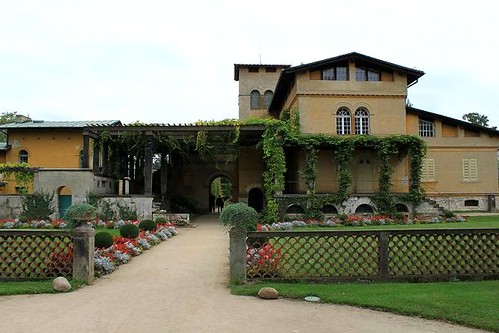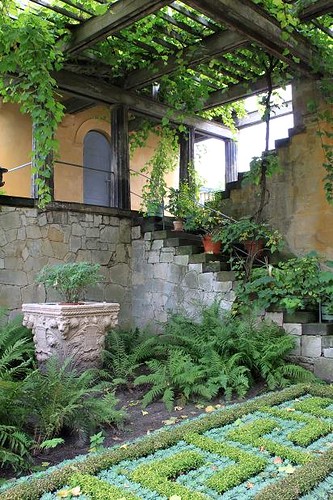Located in the lush landscape of Sanssouci Park, the Roman Baths (Römische Bäder) form one of the most atmospheric and artistic retreats in Potsdam. This charming complex, constructed between 1829 and 1840, was commissioned by Crown Prince Frederick William IV, a monarch deeply inspired by Italian and classical antiquity.
Designed by Karl Friedrich Schinkel and his protégé Ludwig Persius, the Roman Baths are not a reconstruction of ancient Roman ruins, but a romantic interpretation of Mediterranean villa architecture, merging Italian rural charm with elements of Greek and Roman design.

What to Expect at the Roman Baths Complex?
The ensemble is made up of several interconnected buildings and open-air features, each evoking a different piece of ancient European culture:
- The Italian Country House (Villa): Inspired by Tuscan villas, with warm stone walls and vine-covered arcades.
- The Greek Temple: A small, columned pavilion reflecting Frederick William IV’s love for Hellenistic architecture.
- The Roman Bathhouse: Featuring classical rooms such as the atrium, tepidarium (warm bath), and caldarium (hot bath), though they were never used functionally.
- Gardens and Arcades: Landscaped paths, pergolas, and water features blend the buildings harmoniously into the surrounding park.
The complex was never intended for bathing. Instead, it served as a place of retreat, inspiration, and artistic contemplation, a private escape within the royal gardens.

Why Visit the Roman Baths in Sanssouci Park?
The Roman Baths complex is one of the most poetic spots in Potsdam, offering serenity, symmetry, and a glimpse into the romantic mind of a future king. It’s not just a place to admire architecture, but to reflect, stroll, and imagine life in another time.
If you're exploring Sanssouci Park, the Roman Baths are a must-see stop, perfect for travelers who enjoy history, design, and timeless tranquility.
